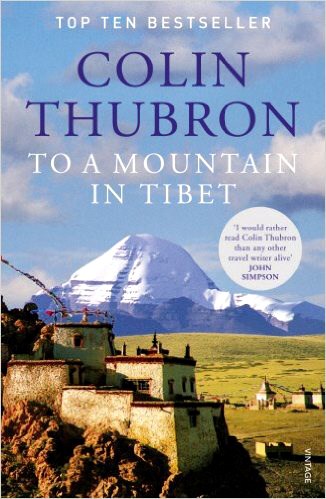Even today, in an age where travel has never been simpler and information about destinations has never been easier to find, Tibet remains a mysterious and little-known place. Isolated by the Himalayas, the mountainous country has developed a society whose fascinating art and religious faith have captivated people around the world.
In his book Tibet: Places and History, Piero Verni leads the reader past glittering turquoise lakes, across huge plains dotted with yaks and nomads’ tents, and over high passes draped with colourful prayer flags. Situated high in the Himalayas, the geography in Tibet is on a humbling scale, with every view tinged by spectacular mountain light.
Many visitors to Tibet are charmed or intrigued by the country’s unusual customs, which have formed in isolation over thousands of years. Tibet Customs by D. Liao is a magnificent collection of stories covering lifestyle, festivals, arts and religions, with a dash of poetic commentary from a Chinese perspective.
Sometimes called the Ocean of Songs and Dance, Tibet is a place in which you might see circle dances, tap dances and drum dances as well as the evocatively named Ghost Dance, Mask Dance or Guozhang Dance, each important for different reasons or at different times of year. Music and dance are an indispensable part of Tibetan culture. Melodious love songs, meanwhile, are interspersed with bursts of hearty laughter that reverberate over the grassland. Liao’ s book offers a panoramic portrait of a country and people that are drastically changing, yet still cling to age-old traditions.
Tibet is home to the world’s highest peak, Mt. Everest. Recent books about the mountain include climber Conrad Anker’s The Call of Everest: The History, Science and Future of the World’s Tallest Peak. Anker describes how Everest was “born,” how it has changed physically and how it affects the psychology of those who try to climb it — as well as those who conquer it. Other sections cover Sir Edmund Hillary and his guide, Tenzing Norgay, as they conducted their historic ascent, an incredible feat of courage and willpower. The book also covers sustainable mountaineering, protecting the environment around Mt. Everest, and using its tourist potential to bring economic benefits to locals.
Visiting Tibet and not going around Mt. Kailash — a walk called a kora — would be like visiting a great capital but ignoring its most famous treasure. With its distinct, four-sided summit, Mt. Kailash dominates the region just as it dominates the mythology of a billion Buddhists and Hindus, who view it as a sacred place. Throughout his book, To a Mountain in Tibet, Colin Thubron marvels at the religious spirit of the pilgrims to Mt. Kailash, who brave an arduous, sometimes deadly journey. He also reflects on the teachings of Tibetan Buddhism, especially relating to impermanence, change and death.
A lengthy section describes in sharp detail the Tibetan sky-burial, a grizzly yet environmentally friendly practice. Towards the end of his kora, Thubron writes about the mortality of his own family, some of whom have died. In this section, he quotes extensively from The Tibetan Book of the Dead, written to ease the transition period in Tibetan Buddhism between death and rebirth.
All of these books are available from your local libraries.
--A Good Read is a column by Tri-City librarians that is published on Wednesdays. Shirley Chan works at Coquitlam Public Library.



